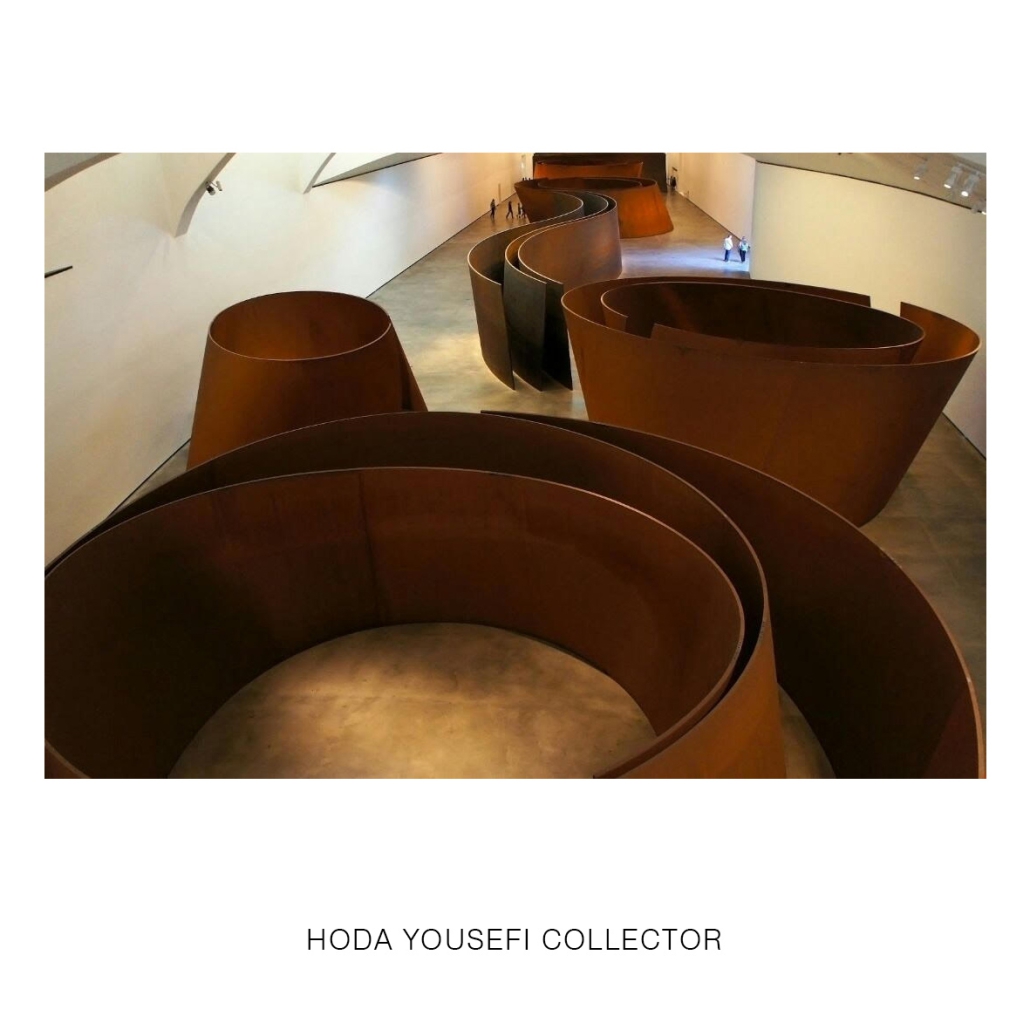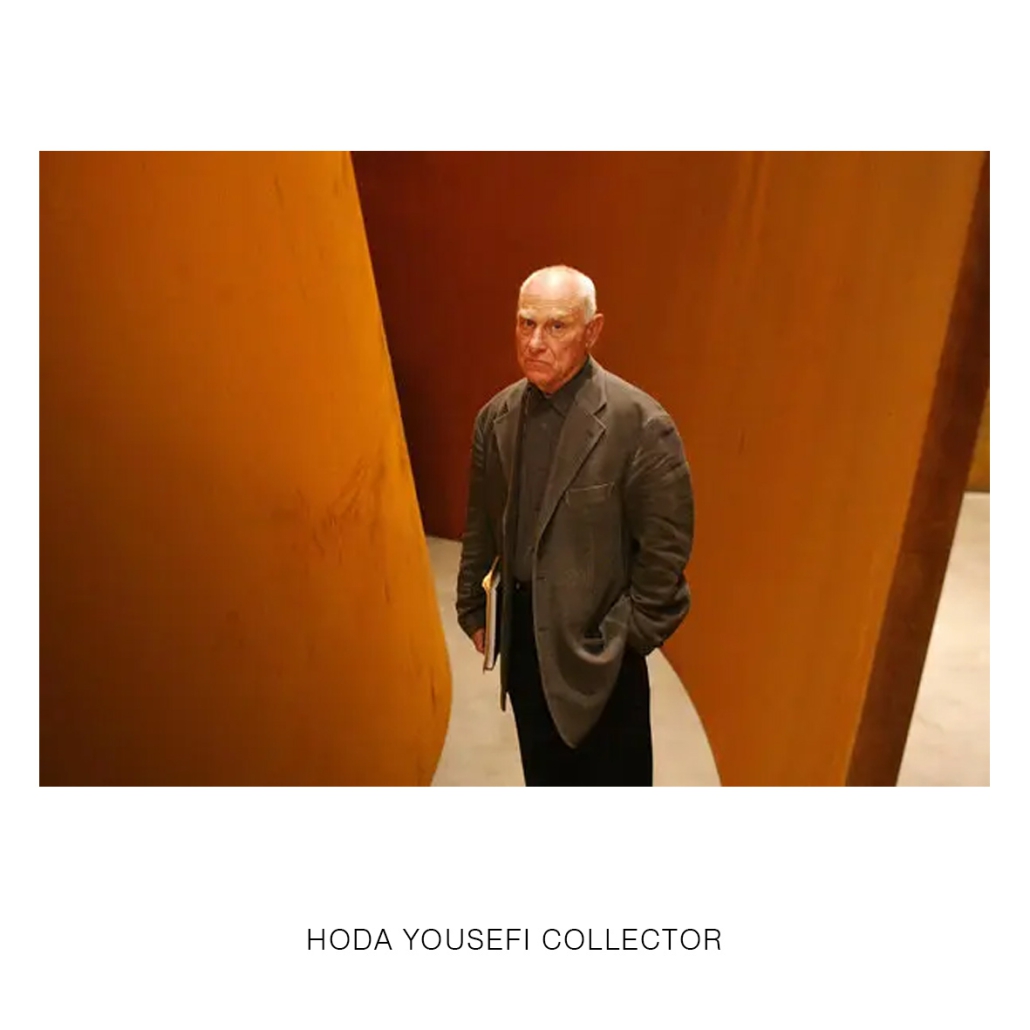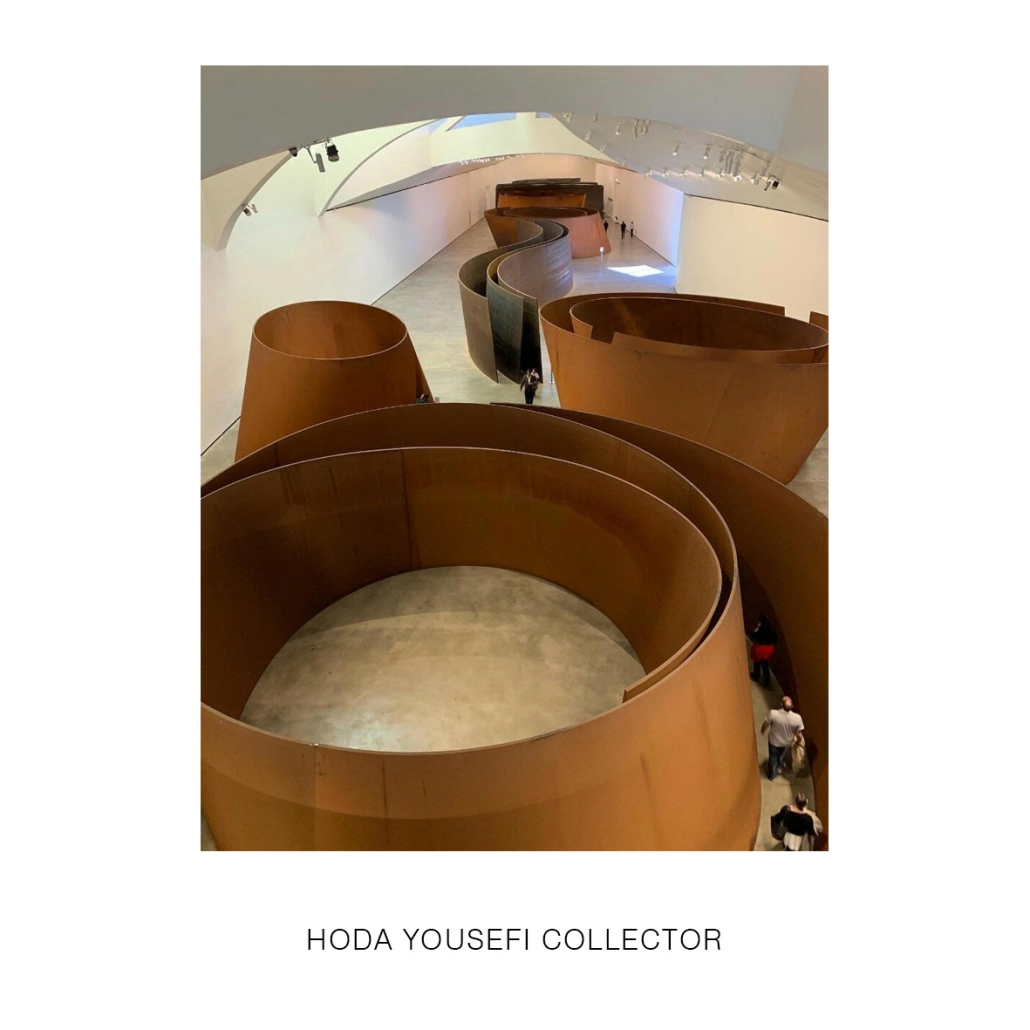در دل آثار ریچارد سرا، مجسمهسازی مینیمالیستی به بیانی نوین از فضا و زمان میرسد. سرا، با دوری از پایههای متعارف و بهرهگیری از مصالح صنعتی، مخاطب را در تعاملی زنده با اثر قرار میدهد. مجسمههای فولادی عظیم او، بدون نیاز به پشتیبانی خارجی، در محیطی که خلق میکنند، مفهوم زمان را با حرکت بیننده در فضاهای متغیر و دالانهای مارپیچ به چالش میکشند. “مسئله زمان” نه تنها یک اثر هنری است بلکه یک تجربهی متافیزیکی است که در آن، زمان و فضا بهصورت نسبی درک میشوند و بیننده را به سیری در خاطرات ازلی بشریت دعوت میکند. این اثر، الهام گرفته از رقص و باغهای ذن، به ما اجازه میدهد تا در یک رقص موزون با زمان، در میان دیوارهها و فضاهای متحرک قدم بزنیم و مفهوم زمان را در حرکت خود کشف کنیم.
در مجموعهای به نام “مسئله زمان”، ریچارد سرا با ورقهای فولادی خود، نمایشی از زمان را به تصویر میکشد. این مجموعه، که ابتدا با سه مارپیچ فولادی به نام “مار” در سال ۱۹۹۷ آغاز شد، در سال ۲۰۰۵ با افزودن هشت اثر جدید تکمیل گردید. این قطعات فولادی، که هر یک به وزنی معادل ۱۰۰۰ تن میرسند، با دقتی مهندسی شدهاند تا بدون نیاز به پشتیبانی، استوار بمانند. در این آثار، سرا به جای تمرکز بر ایستایی یا تضاد با نیروی جاذبه، به مفهوم زمان پرداخته است. این مجسمهها، بیش از آنکه به خصوصیات فیزیکی ماده بپردازند، بهانهای هستند برای اکتشاف مفهوم متافیزیکی زمان.
در آثار ریچارد سرا، مسیرهای فولادی ما به دنیایی میبرند که در آن، فضا و زمان به هم گره خوردهاند. این دالانها، گاهی باریک و مسدود، و گاهی باز و دایرهوار، ما را در مسیری قرار میدهند که با گذر زمان همراه است. این تجربه، بیش از آنکه بر اساس بصریات باشد، بر اساس حس حرکت و زمان است. در این سفر، هیچ یادآوری یا معنایی تداعی نمیشود، بلکه تجربهای خالص و مجرد از زمان است که بر اساس حرکت در فضا شکل میگیرد. سرا این تجربه را به خاطرات ابدی بشریت متصل میکند. او با الهام از رقص به عنوان حرکت هماهنگ بدن در زمان و باغهای ذن که درک آنها نیازمند گذر زمان است، به خلق این سطوح پرداخته که مانند باغهای ذن، با حرکتهای موجدار و خمیدگیها، رقصی از دیوارها و فضاها را در گذر زمان به نمایش میگذارند.
تحلیل هدی یوسفی
At the heart of Richard Serra’s works, minimalist sculpture reaches a new expression of space and time. By staying away from conventional foundations and using industrial materials, Sera puts the audience in a live interaction with the work. His massive steel sculptures, without the need for external support, in the environment they create, challenge the concept of time by moving the viewer through changing spaces and spiral corridors. “The Problem of Time” is not only a work of art but also a metaphysical experience in which time and space are understood in a relative manner and invites the viewer to travel through the eternal memories of humanity. Inspired by dance and Zen gardens, this work allows us to walk through moving walls and spaces in a rhythmic dance with time, discovering the concept of time in our movement.
In a series called “The Matter of Time”, Richard Serra depicts a representation of time with his steel sheets. This collection, which first started with three steel spirals called “Snake” in 1997, was completed in 2005 with the addition of eight new works. These steel pieces, each weighing up to 1,000 tons, are carefully engineered to remain stable without the need for support. In these works, instead of focusing on stasis or conflict with gravity, Sera focused on the concept of time. These sculptures, rather than dealing with the physical properties of matter, are an excuse to explore the metaphysical concept of time.
In the works of Richard Serra, the steel paths lead us to a world where space and time are intertwined. These corridors, sometimes narrow and blocked, and sometimes open and circular, put us on a path that is accompanied by the passage of time. This experience is more based on the sense of movement and time than on visuals. In this journey, no memory or meaning is evoked, but it is a pure and abstract experience of time that is formed based on movement in space. Serra connects this experience to the eternal memories of humanity. Inspired by dance as the coordinated movement of the body in time and Zen gardens, which require the passage of time to understand, he created these surfaces, which, like Zen gardens, with wavy movements and bends, show a dance of walls and spaces in the passage of time. they let.
Hoda Yousefi’s analysis



